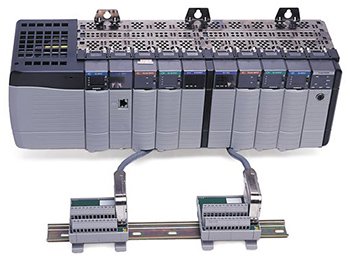
How to Increase System Availability without Redundancy
Taha Rajabali | 19 April 2013
I was recently involved in a project that implemented redundancy in order to achieve high availability and came across an article that provided some insight into how one may achieve the same results through alternate, non-redundant solutions [1].
The term availability has traditionally meant implementing redundancy in system design, meaning duplicating or triplicating equipment such that in the event primary equipment fails, system operation continues uninterrupted. Redundant components that are required to achieve high availability typically include:
- Uninterrupted power supplies (UPS) can greatly improve the quality of supply power by filtering unwanted power surges and brown/black outs.
- Redundant power supplies provide clean, low-voltage power to the controllers and other peripheral devices.
- Redundant components include controllers, IO modules, sensors, actuators, servers, and databases, which are the final line of defense to ensure high system availability.
Redundancy Alternatives
One of the most obvious outcomes of redundancy is increased cost as well as an increase in the number of components and component failures in the system. If improperly applied, the overall availability of the system could actually decrease! Thankfully, designing systems for reliability and maintainability can also increase their overall availability. Reliability is the probability that a device will perform its intended function during the mission time.
Techniques such as component derating and applying principles of Six Sigma are typically used to design reliable systems; however, diagnostic abilities within the components are also required in order to detect possible failures and alert personnel when replacements are required.
A very reliable system, however, does not guarantee high availability unless it is also maintainable, which can be defined as the ability of a system to be easily diagnosed, modified, and repaired during the mission time. There are multiple ways of achieving system maintainability including:
- Onboard diagnostic features such as system level diagnostics, auto-tuning IO, LED indicators, and network monitoring tools
- Plug and play modules can be added and removed without having to shut down power to the entire system
- Fieldbus technology such as ControlNet and Profibus that allows connecting multiple sensors/ actuators to a single communication point, significantly reducing field wiring. Some newer FieldBus technologies also provide built-in diagnostics, alarming, calibration as well as control methodologies, which further improve maintainability
- Qualified and trained personnel who have a good understanding of the system and are capable of interpreting alarms and diagnostic messages and take the appropriate actions to remedy the situation
Overall, we can see that while redundancy is the traditional method for achieving high availability, there are additional non-redundant methods that can also be implemented to achieve high availability, which helps to meet customer expectations.
References: [1] Art Pietrzyk (2013) Designing a Control System for High Availability [online] Available: http://ourmumbaicity.com/File_ControlSystemDesign.html
Comments
No comments have been posted to this Blog Post
Leave a Reply
Your email address will not be published.
Comment
Thank you for your comment.